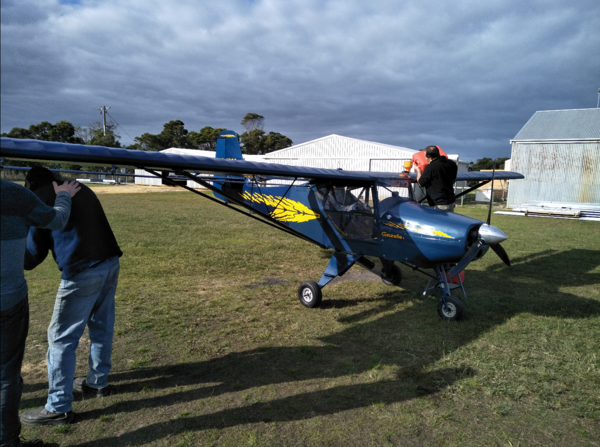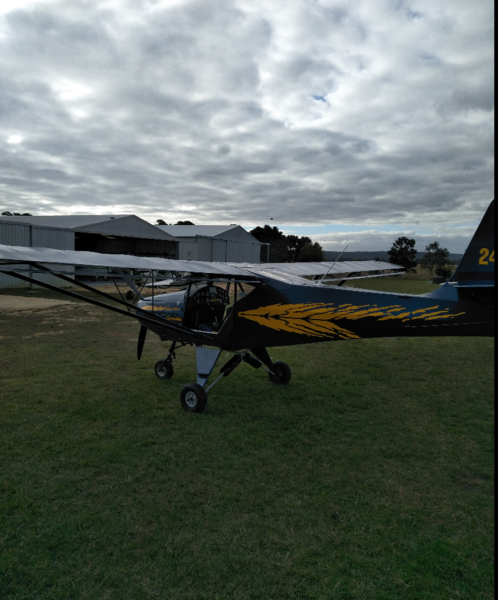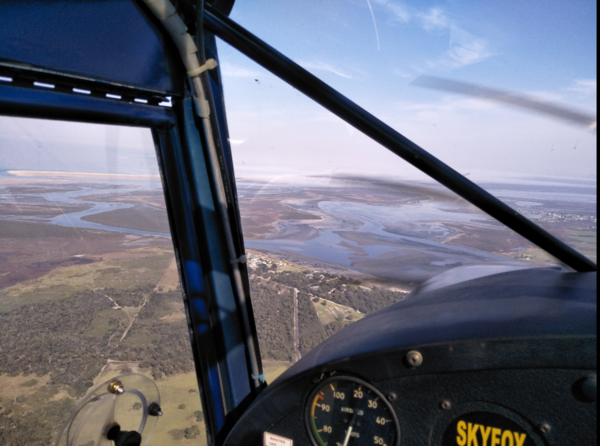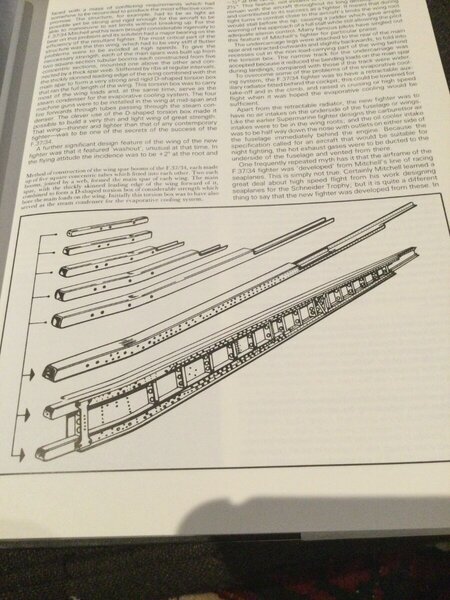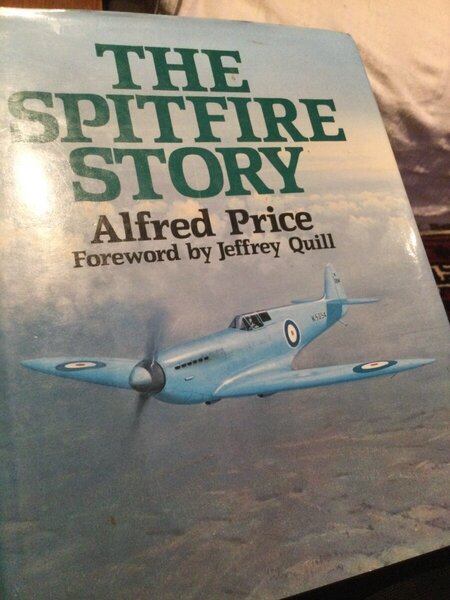-
Posts
459 -
Joined
-
Last visited
-
Days Won
17
Content Type
Profiles
Forums
Gallery
Downloads
Blogs
Events
Store
Aircraft
Resources
Tutorials
Articles
Classifieds
Movies
Books
Community Map
Quizzes
Videos Directory
Everything posted by F10
-
I heard Huey pilots in Vietnam would rotate all the engine instruments in the panel, so the needles all pointed straight up....you could see a problem with one quick glance.
-
The seat of your pants...you will sense an engine note change, maybe even feel a slight deceleration... seat then fills up......😝
-
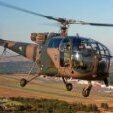
Theory of Flight that's Australian and Online
F10 replied to old man emu's topic in Student Pilot & Further Learning
The AP 3456A, Manual of Flying, Royal Air Force, is what I think, the best book on Aerodynamics written for pilots as such. In fact it’s a whole series on flying, A through to K, dealing with engines, avionics, all aviation aspects. They are amazingly, available online. I know I should paste in a link, but haven’t got one at my fingertips as such. But a search should do it. -
Mine was in a trusty old C172 ZS-CZD...sadly last heard it was looking a bit sorry for itself, having been used as a flying test bed for an auto engine...often dreamt of having the money to buy her and restore it to its former glory! Can’t remember a whole lot...maybe that’s a good thing! But do remember getting a big kick from looking at the empty right seat! Gave a cowboy type whoop! I see a lot of people were taken by surprise at the weight change, this should have been an important part of a pre solo brief. In the B206 it really was important as the hover attitude is significantly changed. Hovering is challenging, so this can unsettle a student. It will notably change the takeoff and landing too, as you lift or settle, from this different skid/hover attitude. Real reason my hair is now grey!
-
MattP, you reframed my argument well. Your example is a good one. If my Gazelle was still VH registered, I could have jumped in and launched (if I was inclined to do so, without flying 2hours with a mate in his Jabiru...which I did do), as long as my CPL with current BFR, was in my back pocket, all perfectly legal. I just can’t help feeling RAA could give a bit more recognition of a CASA licence, interesting because CASA seems to recognise the RPL, as the first stepping stone to a PPL or even a CPL, if you are doing the exams at any rate. Be that as it may, despite my experience, when I walk towards the Gazelle hangar, I’m enthusiastic and excited...but along with that is a slight flutter of a butterfly wing in the stomach....yes, a flicker of fear...the voice says to me, “Be careful....this little aircraft can kill you, make sure that preflight is good....don’t do anything you’re not comfortable with yet....” If I ever walkout and that voice is not threre, I’ll divert to the clubhouse for a long coffee, a natter with Jim and Brian, then a drive home.
-
I did not say I don't agree with the 5 hour rule. Personally, it has for me, a significant cost implication My point was, could it not be made a bit more flexible to take individual experience, into account. To say you have made some pretty adventurous assumptions about me, my attitude and legally allowed manoeuvres in the Gazelle, may be understating the fact. By "humanly possible", I meant well within the standards required of the MOS61 requirement in terms of speed, altitude and heading accuracy. Within the standards any reasonable instructor would consider sufficient during a BFR. Perhaps this was not clear. I feel I have the experience to explore the Gazelle's performance envelope, bearing in mind for one of your items it does not have an AoA indicator, so I would have to fly it on the light buffet. This would be hazardous in the Gazelle, because it's well enough defined. Let me say, in terms of aircraft performance, 90% of my flying hours are military, flying aircraft capable of 420 KIAS straight and level to aircraft that can hover. 800 hours on Harvards, spinning, G stalling, wing drop recovery and aerobatics, amongst other disciplines, in what is not considered by many, the easiest aircraft to fly, has taught me a fair bit about aircraft performance and handling characteristics. I feel I have the skills to explore these on my own in the Gazelle, which would take longer than 5 hours.... However, I do feel I have the experience to avoid getting myself into situations, that would require the use of advanced flying techniques. The definition of a good pilot?
-
Any good spots in Gippsland area? I keep my Gazelle at Yarram, it’s a great little field, nice grass roots feel and good bunch of likeminded blokes. Good scenery nearby on the coast, Wilson’s Prom and Port Albert area. Great for beach landings, for those with those overinflated tyres! Let me. Know if you’re popping over.
-
I guess in discussing flaps, why do we want high drag with land flaps? The C172, for it’s size, has great Fowler flaps, but at 40 degrees, those are like two barn doors, no wonder the poor thing struggles to climb. Like Nev said in an earlier post above, aircraft speed response to power changes is faster, with high drag. Another consideration is older generation jet engines had a lot of throttle lag. They took a looong time to spool up from a low % RPM. This was a problem on final approach, if you were getting low on final....if you needed power. With high drag, you could fly the approach with a lot of power on, leading to much faster throttle response. This is true when flying a “jet approach”, controlling the glide slope with attitude, speed with power. Most of us will probably fly glide slope control with power, speed maintenance with attitude changes. On a go around, you need now to get rid of that drag. Aircraft sink when raising flaps, loss of lift. But this is not much with raising a land flap setting. I notice the sink and trim change more with raising take off flap, as that lower flap angle of around 14 degrees, effects lift more. Aerodynamics is fun!
-
-
Yep, flying for the SAAF Museum Before a display, I would say to myself in my emergency brief, “go for the ground”. What I meant by that is, give the aircraft a chance to recover if you stall/ autorotate. When that windscreen fills with brown earth...you will have a very powerful auto impulse, to pull back in the controls....unless you discipline yourself against this. Pulling back too soon can result in not installing the wings or causing a secondary stall. In a forced landing, as that ground comes up....you will involuntarily start pulling back in the sick. To me, it’s vital you have sufficient speed to fly the landing. Stall or lose control at 50 ft, and you are in trouble. The body can handle a fore-aft deceleration a lot better than a vertical deceleration. High RoD impact is a big problem. Harnesses will handle a lot of pretty heavy forward impact. Keep control right down to the ground.
- 1 reply
-
- 1
-

-

Lowering Class E between Melbourne and Cairns
F10 replied to Bosi72's topic in AUS/NZ General Discussion
As the Captain of an aircraft, if you think obeying an instruction from ATC, will endanger your aircraft, disregard it. What’s the ATC going to do, shoot you down? It is inexcusable for ATC to endanger an aircraft. ATC is there FOR aircraft operations, aircraft operations aren’t FOR ATC. I find it unfortunate a lot of pilots are fearful of speaking to class C or D controllers. They are there to HELP you......unfortunately CASA and Air Services have in a way, possibly unintentionally created this situation, of authoritarian ATC services. And no, of course you need to follow ATC instructions for safe traffic flow, you know that’s not what I’m saying. -
Some of my thoughts if you are interested. I was trained to always trim the aircraft for your current stage off flight and configuration. This leads to accurate flying, especially if slightly distracted by a frequency change or traffic lookout. It’s often tempting to fly, with the trimmers....a No-no, my military flight instructor would make me run three times around dispersal for that! Rather, select the attitude, hold it, then trim pressures off the controls. Trimming to hold the speed (nose attitude) on final helps towards a good landing, fighting elevator pressure during the hold off, can be the difference between a greaser and an arrival I think. I confess on short final, I might trim even a little nose up. This does of course, lead to a large trim change on a go around. However, you should anticipate this and trim systems are normally quite fast, so re-trimming for the go around should not be an issue, but yes, it is a busy time in the cockpit. In my Gazelle I trim almost full nose up on short final, on the go around, I need to move the lever forward to the take off position, otherwise with slipstream effect and holding the climb nose attitude, if I don’t trim, I need to hold a bit of forward pressure on the stick. The Gazelle is nice because it doesn’t suffer from the “you are going nowhere” when going around with full flap. The C172 on a hot day, can hardly climb with full flap. A lot of aircraft complicate the go around further by making it vital, you raise that flap to a take off setting. Remember, up to around 14 degrees flap, you get a lot more lift compared to little drag. Beyond 14 degrees, the ratio reverses!
-
That looks cool! What type of pump is that? Superchreap Aeronautics or Range & Endurance Performance Co seem to only sell the solenoid type? Is that a fuel pump or some other fluid pump? Where do you get them? I mounted my Mr Funnel, onto a piece of foam backed plywood, so at least it sits upright on the wing, unaided. No more training my pet octopus to fuel out of a can, hold the funnel, hold the can, hang onto the wing, wipe spilled fuel before it runs over the rear deck Lexan windows, re-attach the bonding clamp........
-
Please....no body mention the Wallabies record against the All Blacks...........it's been a lovely day so far.....!
-
Also, difference between “anti” and “de” ice. Anti ice, heated leading edges, pitot tubes, need to be on before icing. De-ice, like boots, need to be only used after ice build up, to break it off in chunks, use boots too early, and you will just end up with nice clear boots, whilst ice rapidly builds immediately behind the boots. Best option, get out of the height band or avoid as far as possible I reckon.
-
The AP 3456A, Manual of Flying, to my mind the best book on Aerodynamics for dummies like me ever written, states that most positive cambered aerofoils, at low alpha, will have a leading edge down twisting moment. This because acceleration of air around the lower or underside of the leading edge, create a lift force downwards say about 1/4 chord back from the leading edge. On the upper surface, the stronger lift force, acts at around almost half chord. Therefore, these lift forces are not aligned and cause a nose down or negative pitching moment, on a positively cambered aerofoil. Hence, the Skyfox front strut reportedly being under compression. So nothing really unusual, and no aircraft should be flown at a high speed beyond the recommended envelope. As for aileron flutter, yes, due high speed. In heavy rain, they can fill with water, altering the centre of gravity. Even if the aileron weight comes loose, and rattles a bit, as I was shown with a aileron that had been opened up, it cannot go anywhere, held in place by a torque tube and a foam shaping rib.
-
Bought a Fox recently. Very happy....it flies!! Magic! There are some who seem to claim it’s “so easy to fly”, you’re not really a pilot... Having flown 17 different types of SE aircraft below 5700 Kg, some well below...with a wide range of performance, I say that is nonsense. It’s an aircraft that will keep your skills more than up to scratch, in fact, being so light, speed control on finals and landing it, are definitely a bit more challenging than a C172 for example. I’ve flown the Eurofox and I agree, it seems to be what the Skyfox would have, or should have, developed into. They look very similar, cockpit doors virtually identical. Very nice machine the Euro. The Skyfox seems to have a very good safety record. The aileron hangers seem to be the biggest issue, so their condition if wood, needs to be carefully monitored. The biggest threat today, is the fact they are getting old......I agree about the fuselage, it looks pretty strong! Tubes everywhere. The other point of interest, is the AD for an additional fuselage lower cross member. Age related I think, more than a design problem. I must admit, for a trainer, they could have made the landing gear a bit stronger. For those on a budget, I think they are very good value today. I also think, getting one and re-building it, could bean attractive option rather than buying a kit. The one problem being those irreplaceable wing spars. Some recent pics of my beast, after much love and servicing, back in the air!
-
It might....but I won’t 🤪🤪Wow, ok, will give it a go I guess!
-
The “Pussy Cat”, I always thought it was a nice looking machine. In Oman, one of the RAF QFIs told me once when Jags arrived at another unit for an exercise, the next morning, the Jag boys saw each aircraft had a little bowl of milk put out in front of it!
-
The Jug was huge! Pilots said, the cockpit was so big, you could dodge the flack by unstrapping and running around in the cockpit! Tough too, Robert Johnson the USAAF ace, was badly hit on a fighter sweep and trying to make it out of France. The Jug was clanking and banging, barely flyable and was peppered with bullet holes. His heart sank as he saw what he describes as a beautiful blue coloured Fw190 pulled in behind and let him have it. All Johnson could do, was hunker down behind the seat armour plate. The Jug took a pasting, but flew on. The German pilot pulled up next to him and he could see the German pilot look over the P47. He then pulled back in behind the Jug. He had now used his cannon ammunition, so emptied the remaining machine gun rounds, into the helpless Jug. Still, it flew on. The Fw190 again pulled up alongside. The German pilot again looked the aircraft over, then locked eyes with Johnson, slowly shook his head, saluted, abruptly broke formation and dived away back into France. Johnson’s Jug staggered back across the channel, Johnson making a crash landing at RAF Manston on the Kent coast. After a battle damage assessment, where it was seen, one entire engine piston and barrel, had been sheered off by cannon fire, it was subsequently written off!
-
Yes, so sad to think of all their amazing stories, lost forever. My Uncle by marriage, (Duncan, married to my aunt) had a brother, Don Tilley. At 24 years old, Don Tilley was a Lt Col, DSO, DFC and bar, commanding 19 Sqn SAAF, flying Bristol Beaufighters on interdiction over the Adriatic coast. Amazing people. Don would never talk about the war. I’m glad some of the British RAF vets starting talking towards the end of their lives, chaps like Tom Neil, Geoff Wellum and George Unwin. Invaluable!
-
The fact the Tiger ARH is already being replaced....is as scandalous as the submarine project cost. Especially considering the National debt. It seems to me, equipment procurement projects are very badly managed......
-
From an engineering point of view, the easier to repair Hurricane was interesting. Early Hurricanes had a cloth covered wing too. The cloth aerodynamic covering over the load bearing frame, was a carry over from the start of flying. Even the metal winged Hurricane was still a metal covering over the load carrying internal frame. This “easy repair and back in the air” was an important plus in the BoB. The Spitfire was a stressed skin machine, stress loads being taken up by both internal structure and the metal skinning. This made repair difficult, especially in those early war days. The wing had four spars, two each side joined by a web. The spars were like leaf springs, metal box tubes, one inside the other, forming a laminate. Attached to the spars and web, was pretty thick gauge, elliptical shaped one piece leading edge skins, a top and bottom, riveted together along the leading edge. This formed a “D” box structure, forming the whole leading edge. This made for an extremely strong wing. There are no g limits in the Spitfire flight manual. The human limit is exceeded before the structural limit. In extreme situations, Spitfires returned with visible signs of airframe over stress. But no structural failure in combat is known or was ever reported. Alfred Price’s book, the Spitfire Story area is a good read!
-
It’s just another tax m’boy, just another tax! 🧐
-
Three hours later, you must have felt awful! You do get “g” fit...if I pulled 3G now, I’m sure it would feel very heavy...there was a time when I would hardly feel the 2g required for a level steep turn. Simply a case of conditioning. We did max g turns with the students in the PC9M in Oman. I think we flew it at 200 kts, and you went full power rolled and pulled to 6g. The aircraft didn’t have the power to sustain a 6g level turn, so you overbanked to get the nose below the horison and varying bank angle for speed control, you maintained the 6g pull as best you could, in a tight spiral dive... Never got used to that! The g-suit squeezed you like a demented Python, the waist band would blow up hard and make breathing difficult, not very comfortable at all! You had to tense up stomach muscles a lot too, to stop grey out onset.





